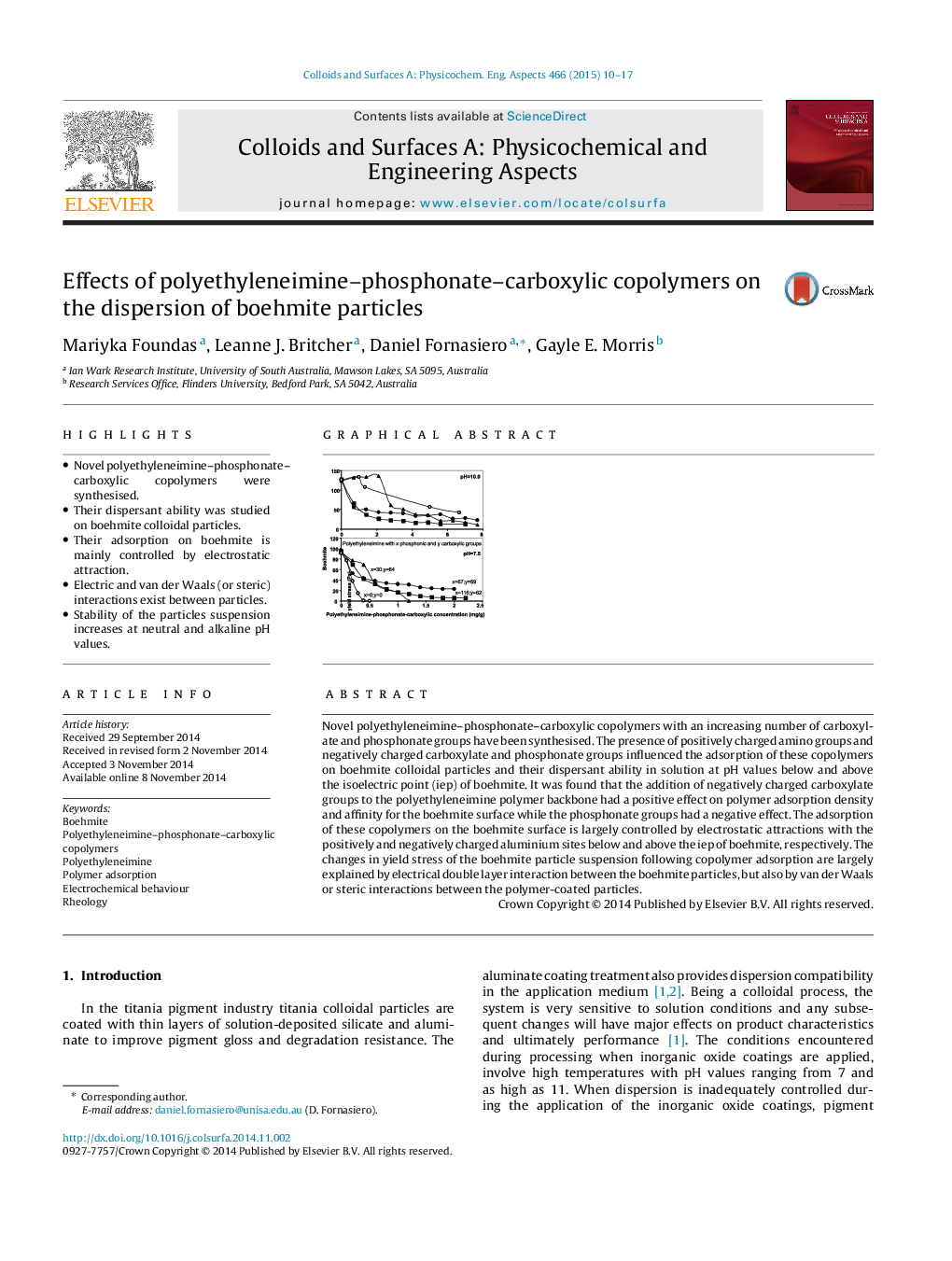| Article ID | Journal | Published Year | Pages | File Type |
|---|---|---|---|---|
| 592411 | Colloids and Surfaces A: Physicochemical and Engineering Aspects | 2015 | 8 Pages |
•Novel polyethyleneimine–phosphonate–carboxylic copolymers were synthesised.•Their dispersant ability was studied on boehmite colloidal particles.•Their adsorption on boehmite is mainly controlled by electrostatic attraction.•Electric and van der Waals (or steric) interactions exist between particles.•Stability of the particles suspension increases at neutral and alkaline pH values.
Novel polyethyleneimine–phosphonate–carboxylic copolymers with an increasing number of carboxylate and phosphonate groups have been synthesised. The presence of positively charged amino groups and negatively charged carboxylate and phosphonate groups influenced the adsorption of these copolymers on boehmite colloidal particles and their dispersant ability in solution at pH values below and above the isoelectric point (iep) of boehmite. It was found that the addition of negatively charged carboxylate groups to the polyethyleneimine polymer backbone had a positive effect on polymer adsorption density and affinity for the boehmite surface while the phosphonate groups had a negative effect. The adsorption of these copolymers on the boehmite surface is largely controlled by electrostatic attractions with the positively and negatively charged aluminium sites below and above the iep of boehmite, respectively. The changes in yield stress of the boehmite particle suspension following copolymer adsorption are largely explained by electrical double layer interaction between the boehmite particles, but also by van der Waals or steric interactions between the polymer-coated particles.
Graphical abstractFigure optionsDownload full-size imageDownload as PowerPoint slide
